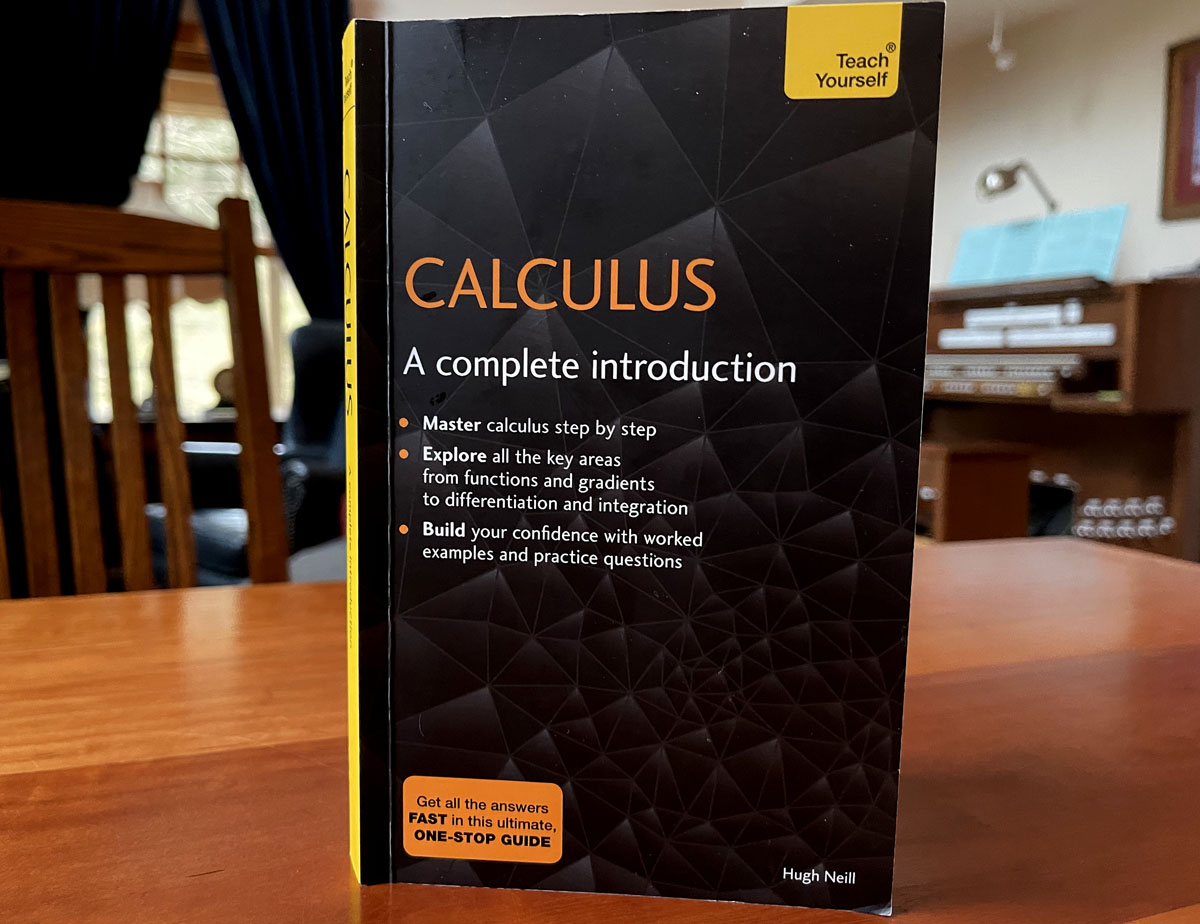
If I had children or grandchildren (I don’t), I would take a very keen interest in math education. Things have changed since I was young, and for the better, I think. I was never good at math. Math courses felt like abuse to me. Partly this was because no math teacher, as far as I can remember, ever had a word to say about what math (as opposed to ordinary arithmetic) was good for.
I struggle now to remember anything at all that I learned in required college courses in math. The only memory I can recover is doing interpolation on tables of logarithms. We don’t even use logarithm tables anymore, of course. We just press a key on a scientific calculator. Somewhere I learned, and retained, a low-level competence with algebra and the basic concepts of the properties of right triangles. That’s about it.
Yet as I got older, I increasingly found physics fascinating. Over the years I have read many books on physics. But when I come to the math, in the form of differential equations, I skip over it. The equations might as well be Greek.
Was this my failing, as a student? Or did the educational system fail me? If we have no concept of how to read differential equations, then we will try to read them as algebra. Differential equations are not algebra, though algebra is used to solve some of them. Sure, computers can substitute numbers for the variables in differential equations and make calculations. But in most cases the computer is applying an algorithm (a sort of numerical recipe) rather than doing algebra. Differential equations are neither algebra nor calculus (though an understanding of algebra and calculus must precede an understanding of differential equations). Virtually everything we know about the natural world is expressed in differential equations.
If I were age 19 again, I wouldn’t avoid math the way I did then. That much was my fault. But it’s also true that the educational system failed people of my generation.
I came across an article in Education Week that makes a strong case for teaching calculus in high school. The piece includes this factoid: “Until about 1980, calculus was seen as a higher education course, primarily for those interested in mathematics, physics, or other hard sciences, and only about 30,000 high school students took the course.”
My guess is that liberal arts colleges before the 1980s (and maybe even now, for all I know) don’t put much emphasis on calculus. My guess is that only students on engineering and science tracks, whether in high school or college, get the right kind of instruction in calculus. According to the piece in Education Week, today 15 percent of high school students take calculus — those students who are on an engineering and science track.
There are some disappointing trends here. According to Education Week, quoting Uri Treisman, a math professor at the University of Texas at Austin:
“More than half of students who take calculus in high school come from families with a household income above $100,000 a year, according to a study this month in the Journal for Research in Mathematics Education. By contrast, only 15 percent of middle-income students and 7 percent of those in the poorest 25 percent of families take the course.
“‘Math is even more important to upward mobility now than it was 20 or 30 years ago, because … it’s seen as related to your general ability to solve problems quickly,’ Treisman said, adding that as a result, ‘there’s general anxiety and panic about equity issues for anything new, even though the current [calculus] pathway is a burial ground for students of color.'”
Most high school students who take calculus are white or Asian. Education Week:
“For example, in 2015-16, black students were 9 percentage points less likely than their white peers to attend a high school that offered calculus and half as likely to take the class if they attended a school that offered it. And if black students did get into a class, their teachers were also less likely to be certified to teach calculus than those of white students, according to an Education Week Research Center analysis of federal civil rights data.”
As an adult with strong interests in physics and science, I’m hoping to get better at math and reduce the humiliation of having to skip over the equations in books I read. So far, so good, with the help of the book below. One nice thing that has changed since I was age 19 is that today we can let computers and calculators do the calculations while we humans concentrate on concepts and, hopefully, real insight into how things work in the natural world. Just learning to operate a scientific calculator is educational. Behind each key is an important concept.
As for our young people, surely we should do everything we can to help all them — even our young artists and writers — get a math education that goes beyond algebra to calculus and beyond calculus to a reasonable ability to read and understand differential equations.

